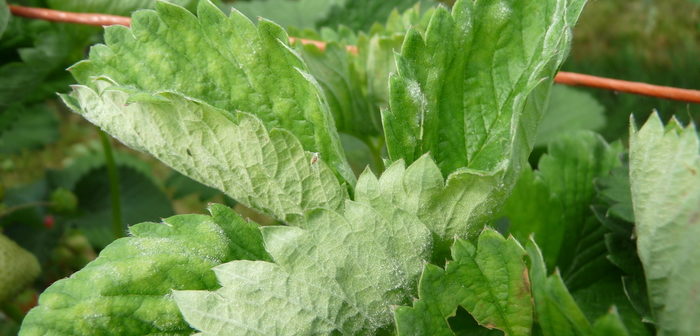BASF is launching a new specialist fungicide, Charm, for the control of powdery mildew in strawberries (outdoor and protected), protected tomato, cucumber and pepper.. Charm contains the SDHI active ingredient fluxapyroxad (Xemium) and the triazole difenconazole formulated as an SC and offers built in fungicide resistance management. It is highly effective, moving the level of disease control achievable forward. It is applied at 0.6 l/ha in strawberries and 1 l/ha in tomatoes and peppers. It has short Harvest Intervals – 1 day in strawberry, 3 days in cucumber and 7 days in tomato and pepper.. It can be integrated into an ICM system, with safety to a long list of beneficials, including Encarsia and Phytoseulius and shows low risk to pollinators, adding flexibility to the programme.
Rob Storer of BASF says “trials have shown excellent control of powdery mildew. This is a result of Charm’s rapid uptake, mobility and persistence. It moves into new growth and protects both new and older leaves. In 5 trials in strawberries in the field and in polytunnels, Charm gave better overall control of powdery mildew than the standards. For example the untreated had on average 12% powdery mildew. Applicationsof Charm reduced this to 2.2% after a week and 2% after 14 days compared to the standard programme which reduced mildew to just 4% after a week and 3.8% after 14 days.”
Powdery mildew is caused by the fungus Podosphaera aphanis and in the UK is the most important disease of crops grown under protection, especially the long season or late season ones. The fungus can attack all above the ground parts of the plant. In severe infections it can reduce both yield and quality. It thrives in warm, humid conditions, with all main strawberry cultivars being very susceptible especially Elsanta, Sonata, Elegance and Amesti.
Mildew can be introduced on infected planting material. The disease can overwinter as mycelium on old living green leaves which survive the winter. Once the temperature rises in the spring, spores (conidia) are produced on the mycelium to start off a new epidemic. Alternatively ascospores can be produced to initiate infection.




